
Triangulum Australe is a small constellation in the far Southern Celestial Hemisphere. Its name is Latin for "the southern triangle", which distinguishes it from Triangulum in the northern sky and is derived from the acute, almost equilateral pattern of its three brightest stars. It was first depicted on a celestial globe as Triangulus Antarcticus by Petrus Plancius in 1589, and later with more accuracy and its current name by Johann Bayer in his 1603 Uranometria. The French explorer and astronomer Nicolas Louis de Lacaille charted and gave the brighter stars their Bayer designations in 1756.

Perseus is a constellation in the northern sky, being named after the Greek mythological hero Perseus. It is one of the 48 ancient constellations listed by the 2nd-century astronomer Ptolemy, and among the 88 modern constellations defined by the International Astronomical Union (IAU). It is located near several other constellations named after ancient Greek legends surrounding Perseus, including Andromeda to the west and Cassiopeia to the north. Perseus is also bordered by Aries and Taurus to the south, Auriga to the east, Camelopardalis to the north, and Triangulum to the west. Some star atlases during the early 19th century also depicted Perseus holding the disembodied head of Medusa, whose asterism was named together as Perseus et Caput Medusae; however, this never came into popular usage.
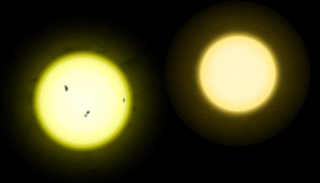
Solar-type stars, solar analogs, and solar twins are stars that are particularly similar to the Sun. The stellar classification is a hierarchy with solar twin being most like the Sun followed by solar analog and then solar-type. Observations of these stars are important for understanding better the properties of the Sun in relation to other stars and the habitability of planets.
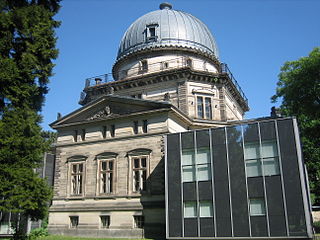
SIMBAD is an astronomical database of objects beyond the Solar System. It is maintained by the Centre de données astronomiques de Strasbourg (CDS), France.

Baade's Window is an area of the sky with relatively low amounts of interstellar dust along the line of sight from Earth. This area is considered an observational "window" as the normally obscured Galactic Center of the Milky Way is visible in this direction. This makes the apparent Large Sagittarius Star Cloud visible.
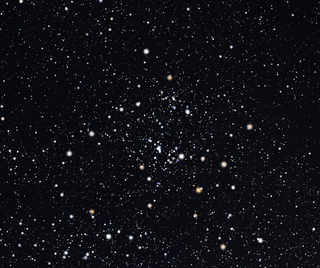
NGC 6755 is an open cluster of stars in the equatorial constellation of Aquila, positioned about 3° to the east of the star Delta Aquilae. It was discovered by the Anglo-German astronomer William Herschel on July 30, 1785. Located at a distance of 8,060 light years from the Sun, it lies 30′ to the northeast of NGC 6755, with the pair forming a visual double cluster. However, they probably do not form a binary cluster system since they have different ages and are too distant from each other.
3C 212 is a quasar located in the constellation Cancer.
3C 191 is a quasar located in the constellation Cancer.
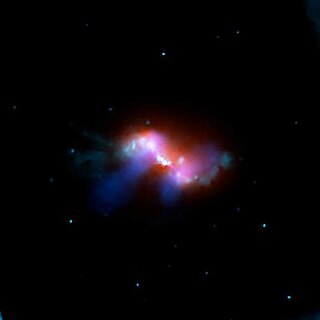
3C 305, also known as IC 1065, is a Seyfert 2 radio galaxy located in the constellation Draco.

3C 215 is a Seyfert galaxy/Quasar located in the constellation Cancer.
3C 268.3 is a Seyfert galaxy/quasar located in the constellation Ursa Major.
3C 299 is a radio galaxy/quasar located in the constellation Boötes.

3C 303 is a Seyfert galaxy with a quasar-like appearance located in the constellation Boötes.

3C 319 is a radio galaxy located in the constellation Draco.
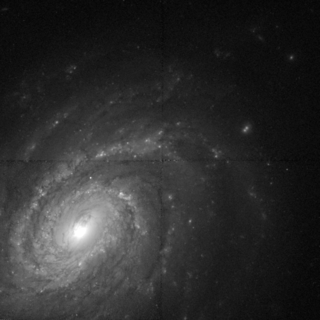
NGC 214 is a spiral galaxy in the northern constellation of Andromeda, located at a distance of 194 megalight-years from the Milky Way. It was discovered on September 10, 1784 by William Herschel. The shape of this galaxy is given by its morphological classification of SABbc, which indicates a weak bar-like structure (SAB) at the core and moderate to loosely-wound spiral arms (bc).
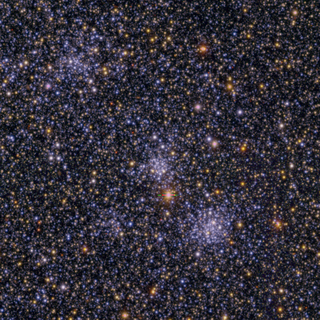
NGC 220 is an open cluster located approximately 210,000 light-years from the Sun in the Small Magellanic Cloud. It is located in the constellation Tucana. It was discovered on August 12, 1834 by John Herschel.

NGC 222 is an open cluster located approximately 210,000 light-years from the Sun in the Small Magellanic Cloud. It is located in the constellation Tucana. It was discovered on August 1, 1826 by James Dunlop.

NGC 231 is an open cluster in the Small Magellanic Cloud. It is located in the constellation Tucana. It was discovered on August 1, 1826 by James Dunlop.

NGC 241 is an open cluster located in the constellation Tucana. It is located within the Small Magellanic Cloud. It was discovered on April 11, 1834 by John Herschel.













